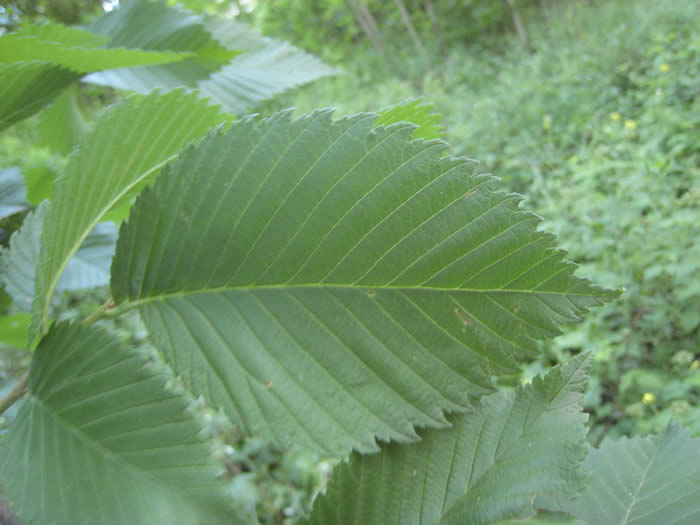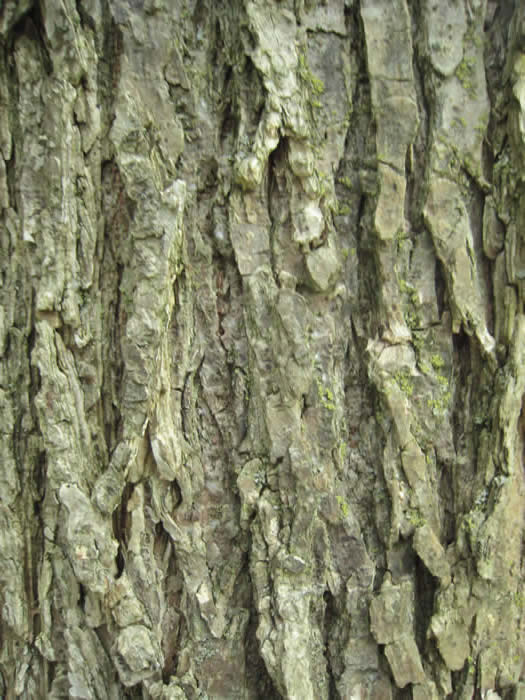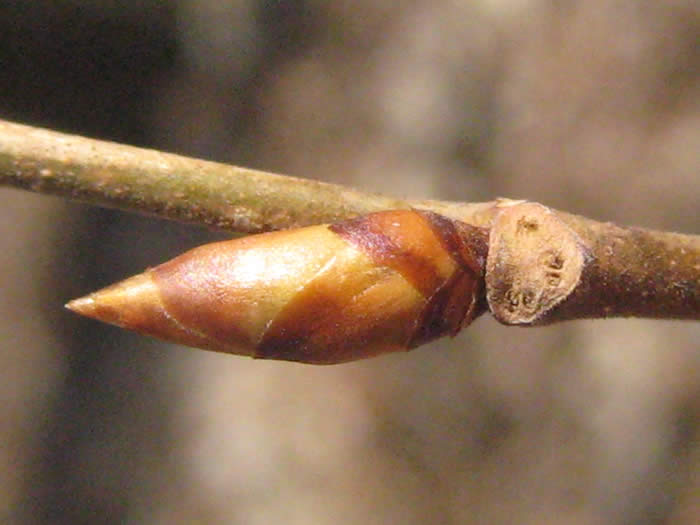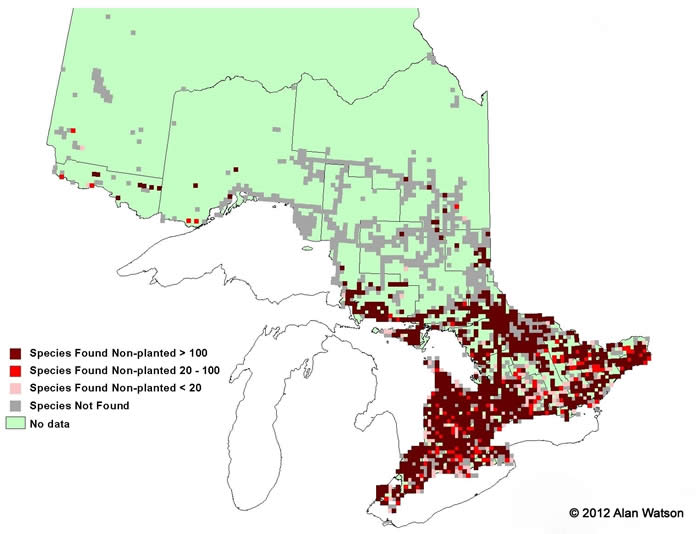White Elm - Ulmus americana
White Elm wood is tough and flexible and water-resistant which made it a necessity when building boat frames and panelling. It is also quite odourless which made it a good wood to use for crates and barrels for transportation of things like cheese and fruits. In 1944, Dutch Elm ddisease arrived in Canada via wooden crates infected with the fungi Opbiostoma ulmi and O. novo-ulmi. Within 15 years approximately 600,000-700,000 elms had died. The way the fungus killed the elms was by blocking the water passage in the trunk which killed them relatively quickly.

These large leaves measure 10-15 cm in length and are usually moderately rough in texture. There are 15-20 veins on each side of the leaf and are abruptly pointed at the end. Photo by Sean Fox.

Bark of the White Elm ranges from dark grey to brown and is deeply furrowed. Usually, broad intersecting ridges are present and the bark also becomes more scaly with age. Photo by Sean Fox.

These flat 5 mm buds are reddish-brown, scaly, hairy and quite blunt. Photo by Sean Fox.

Ontario Tree Atlas map of non-planted White Elm. 1995-1999.
References
Farrar, J.L.. 1995. Trees in Canada. Fitzhenry & Whiteside Ltd. Toronto. ON. 504 pp.
Kershaw, L. 2001. Trees in Ontario: Including tall shrubs. Lone Pine Publishing. Edmonton. AB. 240 pp
Muma, W. 2011. Ontario Trees and Shrubs. [Online] Available: www.ontariotrees.com
OMNR, 2011. Ontario Ministry of Natural Resources: Ontario Tree Atlas. [Online] Available: http://www.mnr.gov.on.ca/en/Business/ClimateChange/2ColumnSubPage/267027.html
OMNR, 2008. Ontario’s Biodiversity: Species at Risk.